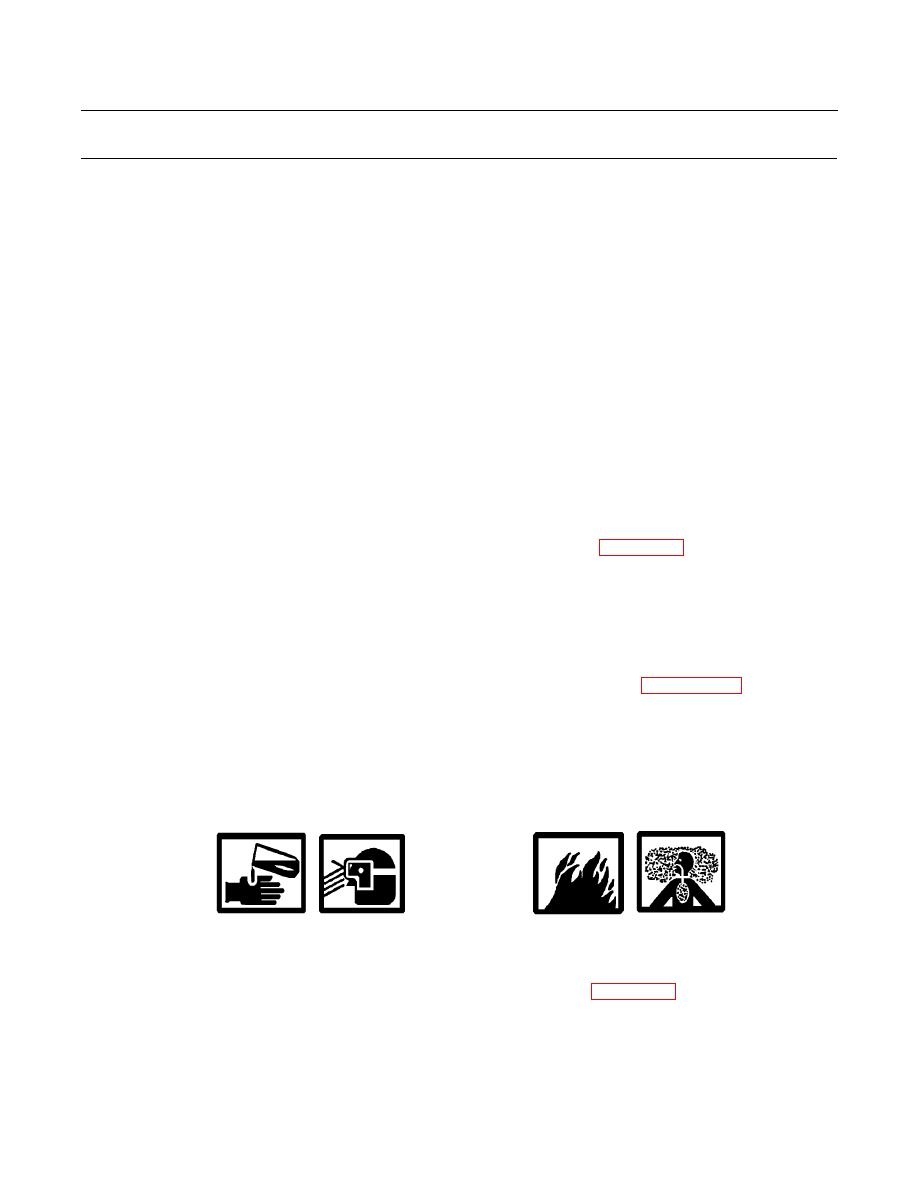
TM 5-3800-205-10-2
PREVENTIVE MAINTENANCE CHECKS
AND SERVICES (PMCS) INTRODUCTION - CONTINUED
0012 00
GENERAL PMCS PROCEDURES - CONTINUED
NOTE
Notify Unit Maintenance of any leaks operator cannot fix.
Leakage Definitions for PMCS
Class I
Leakage indicated by wetness or discoloration, but not great enough to form
drops.
Class II
Leakage great enough to form drops, but not enough to cause drops to drip from
the item being checked/inspected.
Class III
Leakage great enough to form drops that fall from the item being checked/
inspected.
GENERAL LUBRICATION PROCEDURES
NOTE
Lubrication instructions contained in this PMCS are mandatory.
Overall views of lubrications points are located at the end of this work package. Localized views are
located, together with specific lubrication instructions, in PMCS Table 1 (WP 0013 00)
This equipment is not covered by AOAP. Follow manufacturer's hard-time maintenance intervals as
specified in this manual.
Refer to FM 9-207 for lubrication in arctic operation.
1.
Included in this PMCS are lubrication services to be performed by the operator.
2.
Lubrication intervals are based on normal operation. Lubricate more during constant use and less during inactive peri-
ods. Use correct grade of lubricant for seasonal temperature expected (Refer to KEY on page 0012 00-4).
3.
For equipment under manufacturer's warranty, hardtime intervals shall be followed. Shorten intervals if lubricants are
known to be contaminated or if operation is under adverse conditions (e.g., longer than usual operating hours, extended
idling periods, extreme dust, etc.).
4.
Keep all lubricants in a closed container and store in a clean, dry place away from extreme heat. Keep container covers
clean and do not allow dust, dirt or other foreign material to mix with lubricants. Keep lubrication equipment clean and
ready for use.
WARNING
Solvent cleaning compound MIL-PRF-680 Type III is an environmentally compliant and low toxic material.
However, it may be irritating to the eyes and skin. The use of protective gloves and goggles is suggested.
Use in well-ventilated areas. Keep away from open flames and other sources of ignition.
5.
Clean area around lubrication points with solvent cleaning compound (Item 3, WP 0025 00) or equivalent before lubri-
cating equipment. Keep all external parts of equipment not requiring lubrication free of lubricants. After lubrication,
wipe off excess lubricant to prevent accumulation of foreign matter.
6.
Maintain a record of lubrication performed and report any problems noted during lubrication. Refer to DA Pam 738-750
for forms and procedures to record and report any findings.
0012 00-3

